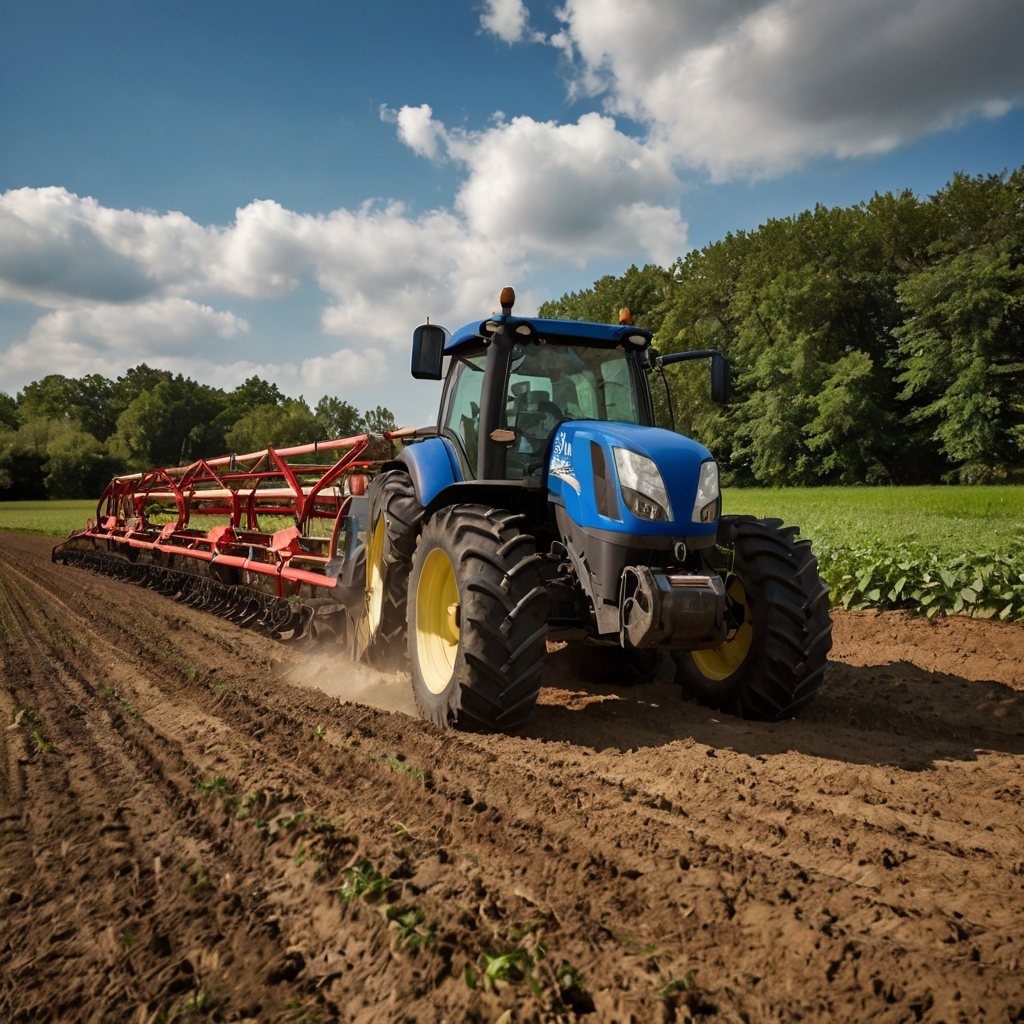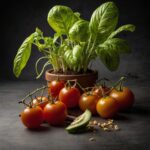Agricultural and food scientists find ways to make agricultural products and establishments more efficient and safe.
What Agricultural and Food Scientists Do?
Agricultural and food scientists typically do the following: Conduct research and experiments to make field crops and animals more productive and sustainable. Improve the way food is processed, packaged, and delivered. Find out how soil composition affects plant growth, and research ways to make it better. Make sure the scientific community, food producers, and the public knows what you’ve done. Manage new projects by traveling between facilities.
Agriculture and food scientists play a big part in keeping the food supply up and running. There’s a lot of research and development going on. The goal of basic research is to understand how crops and livestock grow. Research on agriculture aims to improve quality, quantity, and safety.
Most agricultural and food scientists form their own hypotheses and develop their research methods on their own. They also often lead teams of technicians and students. Travel may be required by agricultural and food scientists who work in the private sector.
The following are types of agricultural and food scientists:
Most animal scientists research domestic farm animals. They study animal genetics, nutrition, reproduction, diseases, growth, and development with a focus on food production. Their job is to find better ways to produce and process meat, poultry, eggs, and milk. The goal of crossbreeding is to make animals more productive or improve their characteristics. Their job is to help farmers figure out how to raise better animals, lower animal death rates, increase growth rates, or otherwise improve the quality and efficiency of their livestock.
In food science and technology, chemists, biologists, and other scientists study the basics. They study food nutrition, search for new food sources, and find ways to make processed foods healthier. Generally, food technologists work on product development, developing new or better ways to select, preserve, process, package, and distribute food. To detect contaminants in food, some food scientists use nanotechnology – a science that manipulates matter atomically. They also inspect food-processing areas to ensure they’re sanitary and meet waste management standards.
It’s their job to improve crop yields and advise food and crop developers about techniques that can improve it. They might figure out a way to control weeds and pests.
A soil scientist studies soil composition, how it affects plants and crops, and how alternative soil treatments affect productivity. Farmers and forestry companies can use their methods to conserve and manage soil. Soil scientists ensure that the environment is clean and that land is used effectively because they’re closely related to environmental science.
Agriculture and food scientists in the private sector typically work for food producers, farms, and processing plants. Generally, they improve food quality. Most of the time, they work in laboratories, conducting tests and experiments, or in the field, taking samples or assessing the conditions. Agricultural and food scientists can also work for pharmaceutical companies, where biotechnology is used to develop drugs. There are some people who try to convert agricultural products into fuels, such as corn ethanol.
The aim of agricultural and food science research at universities is to find new ways of improving animal and soil health, nutrition, and other facets of food quality. They also write grants to governmental agencies such as the USDA and NIH to fund their research. Check out the profile on postsecondary teachers for more information about agricultural and food science professors.
Agri-food scientists work in the federal government to improve food and crop production and to ensure animal safety. Their main focus is on conducting clinical trials or developing experiments on animals and plants.
Work Environment of agricultural and food scientists.
There were 37,200 jobs in agricultural and food science in 2023. Food and agriculture scientists spend a lot of their time in laboratories, at offices, and out in the field. Typically, they study data and reports in a lab or office. As part of the fieldwork, farmers and processors are visited.
Agriculture and food scientists need to follow biosecurity measures, wear appropriate clothing, and tolerate the environmental conditions associated with food production. It may be noisy due to large production machinery, cold due to food storage, or close to animal waste.
There are some positions that may require domestic, international, or both types of travel. There can be a wide range of travel amounts.
Education Requirments of the agriculture and foods scientist.
A bachelor’s degree is required for agricultural and food scientists, although many earn advanced degrees. An animal scientist may earn a doctorate in veterinary medicine (DVM).
The agricultural sciences are offered by land-grant colleges in every state. Additionally, many colleges and universities offer degrees or courses related to agricultural science. In most cases, soil and plant scientists need a bachelor’s degree in agriculture or a related field, such as biology or chemistry.
Biology, chemistry, botany, and plant conservation are common undergraduate courses for food scientists and technologists. To prepare for a career as a food scientist, students take courses such as food chemistry, food analysis, food microbiology, food engineering, and food processing operations. For students preparing to become soil and plant scientists, plant pathology, soil chemistry, entomology (the study of insects), plant physiology, and biochemistry are required courses.
Through internships and research opportunities, agricultural and food sciences students typically develop a strong foundation in their specialty. A student may also benefit from taking courses in humanities or computer science, which can assist them in developing good communication skills.
A bachelor’s degree in agricultural sciences often leads to employment in related fields rather than becoming an agricultural or food scientist. As an example, a bachelor’s degree in agricultural science can be useful in farming, ranching, agricultural inspection, farm credit institutions, or companies that manufacture feed, fertilizer, seeds, or farm equipment. An agricultural or food science degree combined with coursework in business can provide an excellent foundation for managerial jobs in farm-related or ranch-related businesses. Find out more about farmers, ranchers, and other agricultural managers in our profile.
With a bachelor’s degree in food science or agricultural science, many students pursue advanced degrees in toxicology or dietetics. Biology and chemistry majors may be more suitable for pursuing a Ph.D. and conducting agricultural and food research. As a prospective animal scientist in graduate school, you will have the opportunity to participate in experiments and supervise undergraduate students.
There are a variety of advanced research topics in genetics, animal reproduction, agronomy, and biotechnology, among others. Students in advanced courses are also taught statistical analysis and experiment design, which are crucial when starting their Ph.D. research.
The doctor of veterinary medicine degree (DVM) is awarded to some agricultural and food scientists. To be eligible to attend veterinary school, DVM candidates must first possess a bachelor’s degree in animal science.
Important Qualities of agricultural and food scientists.
The ability to communicate. In agriculture and food science, communication skills are crucial. It is crucial that they explain what their studies were about, how they conducted their research, and what they think the implications of their findings are. When working with others, such as technicians and student assistants, they must also communicate effectively.
Ability to think critically. The best way to answer a specific research question must be determined by agricultural and food scientists.
Ability to analyze data. A variety of methods are used by agricultural and food scientists to collect data, including quantitative surveys. After understanding the data, they must apply standard data analysis techniques to find answers to the questions.
Skills in mathematics. It is imperative that agricultural and food scientists understand mathematical concepts, as do many other scientists.
A skill of observation. It is necessary for agricultural and food scientists to observe samples and other data accurately during their experiments. It is possible to obtain inaccurate or inconclusive results if there is any error made.
Licenses, Certifications, and Registrations of agricultural and food scientists.
There are some states that require soil scientists to be licensed in order to practice. Generally, licensure requirements include holding a bachelor’s degree in soil science, working under a licensed scientist for an appropriate number of years, and passing an exam.
The certification of agriculture and food scientists is generally not required, but it can help advance one’s career. Some organizations, including the American Society of Agronomy, the American Registry of Professional Animal Scientists (ARPAS), the Institute of Food Technologists (IFT), or the Soil Science Society of America (SSSA), offer certification to agricultural and food scientists. Certified individuals have expertise in agricultural and food science, which enhances their status.
Certification is generally granted based on education, previous professional experience, and passing a comprehensive examination. A scientist may need to take continuing education courses to maintain his or her certification, and he or she must abide by the ethics code of the organization.
Salary structure of agricultural and food scientists.
According to May 2023 data, the median annual wage for agricultural and food scientists was $76,400. In an occupation, the median wage is the wage at which half of the workers earn more than it and half earn less. The lowest 10 percent earned less than $46,010, while the highest 10 percent earned more than $129,560. The majority of agricultural and food scientists work full-time.
Job Outlook of agricultural and food scientists.
There is a projected 8 percent increase in employment for agricultural and food scientists between 2023 and 2033, which is faster than the average for all occupations.
The number of agricultural and food scientists is expected to increase by about 3,100 a year, on average, over the next decade. There will be a lot of openings due to the need to replace workers who transfer to other occupations or retire.
Employment of agricultural and food scientists
The employment of agricultural and food scientists is expected to increase as agricultural production methods and techniques continue to be researched. They will be required to address issues such as climate change, pests and pathogens, and increased water demand. Agricultural products, such as biofuels, are expected to contribute to employment growth as well. References


